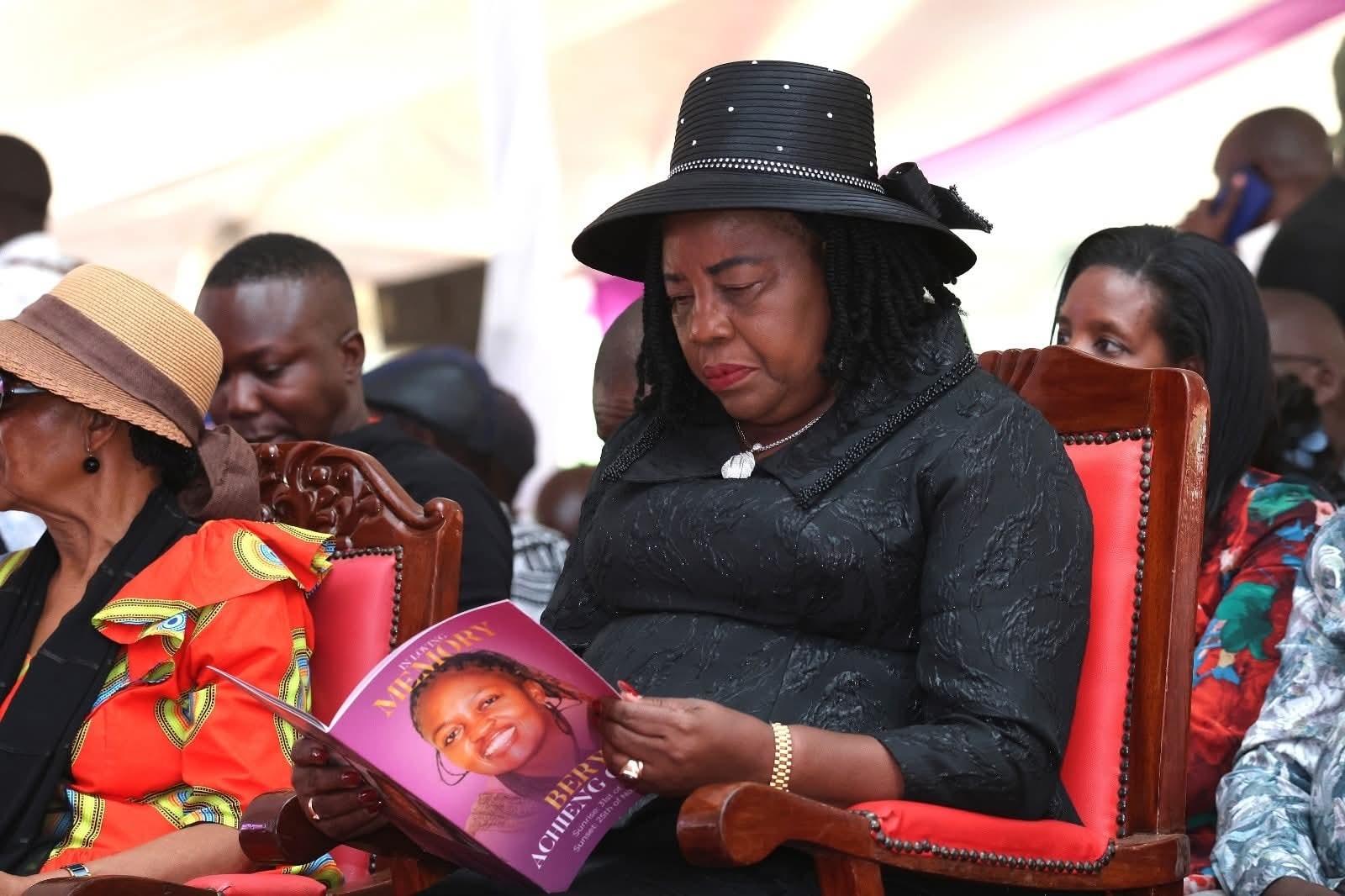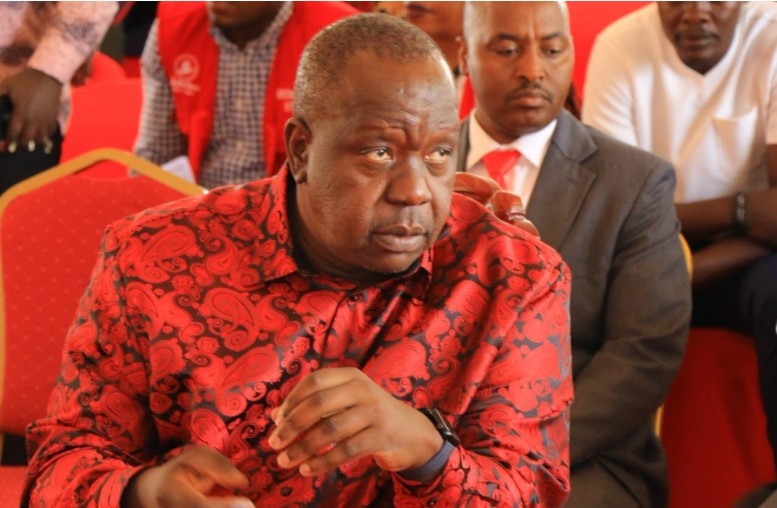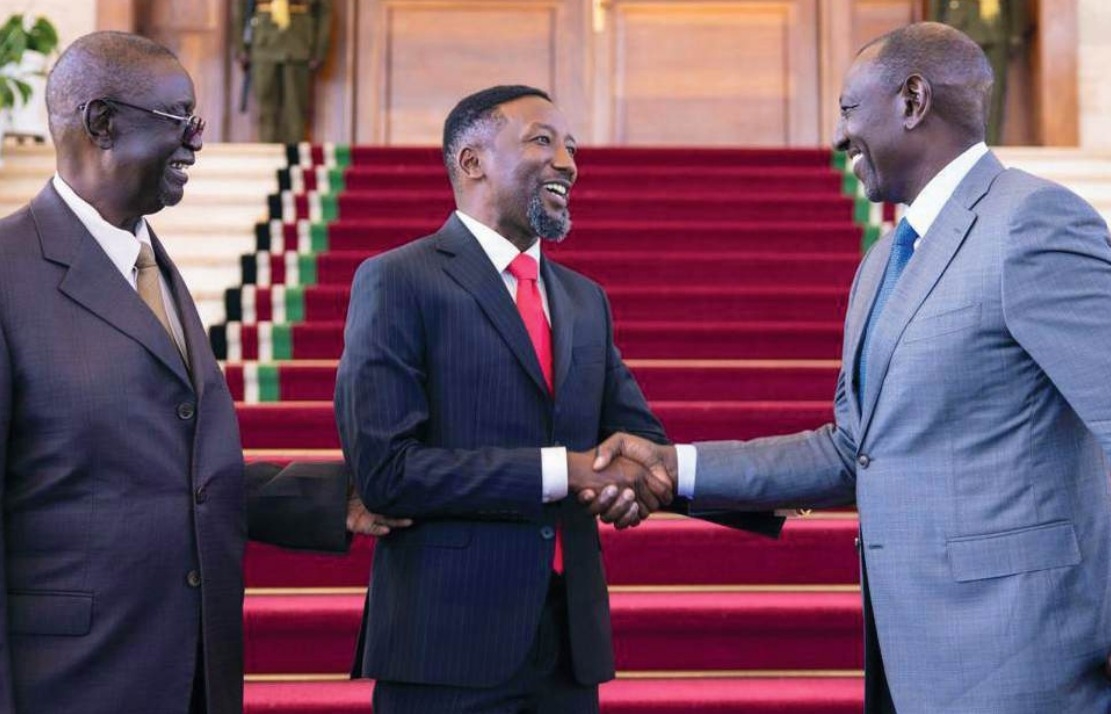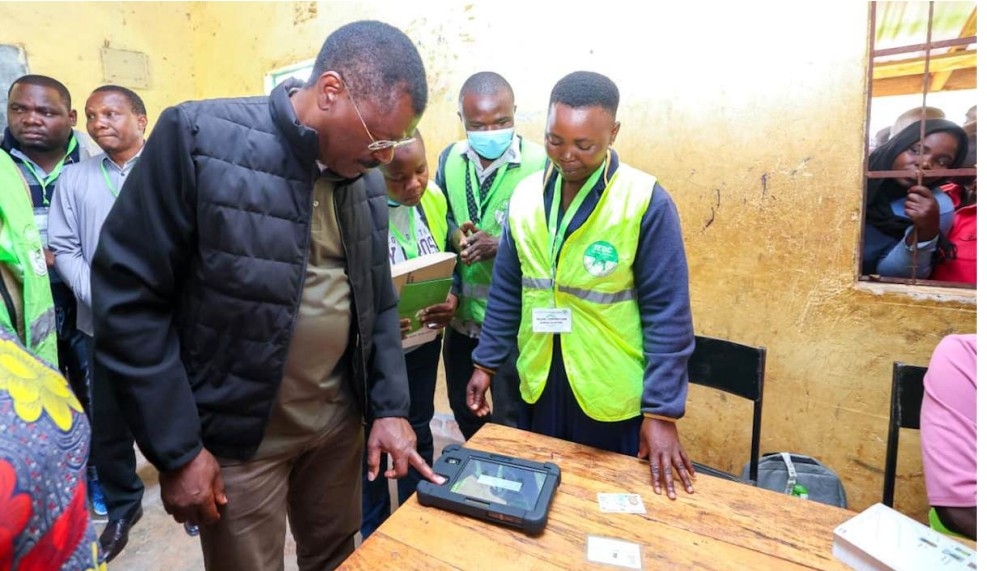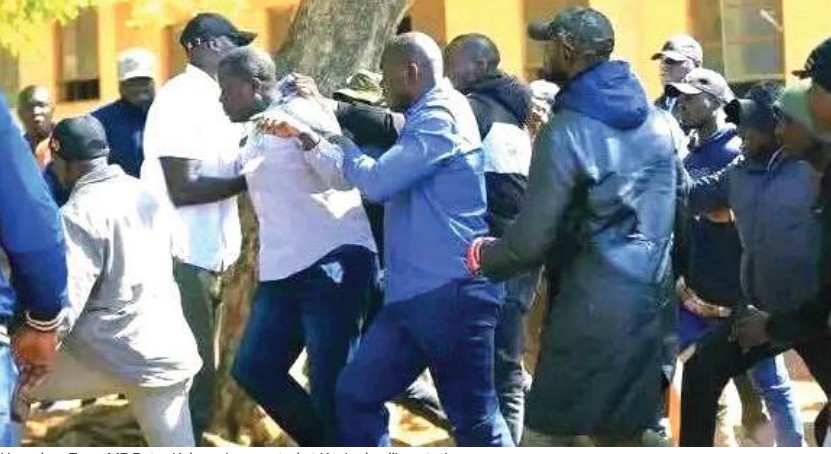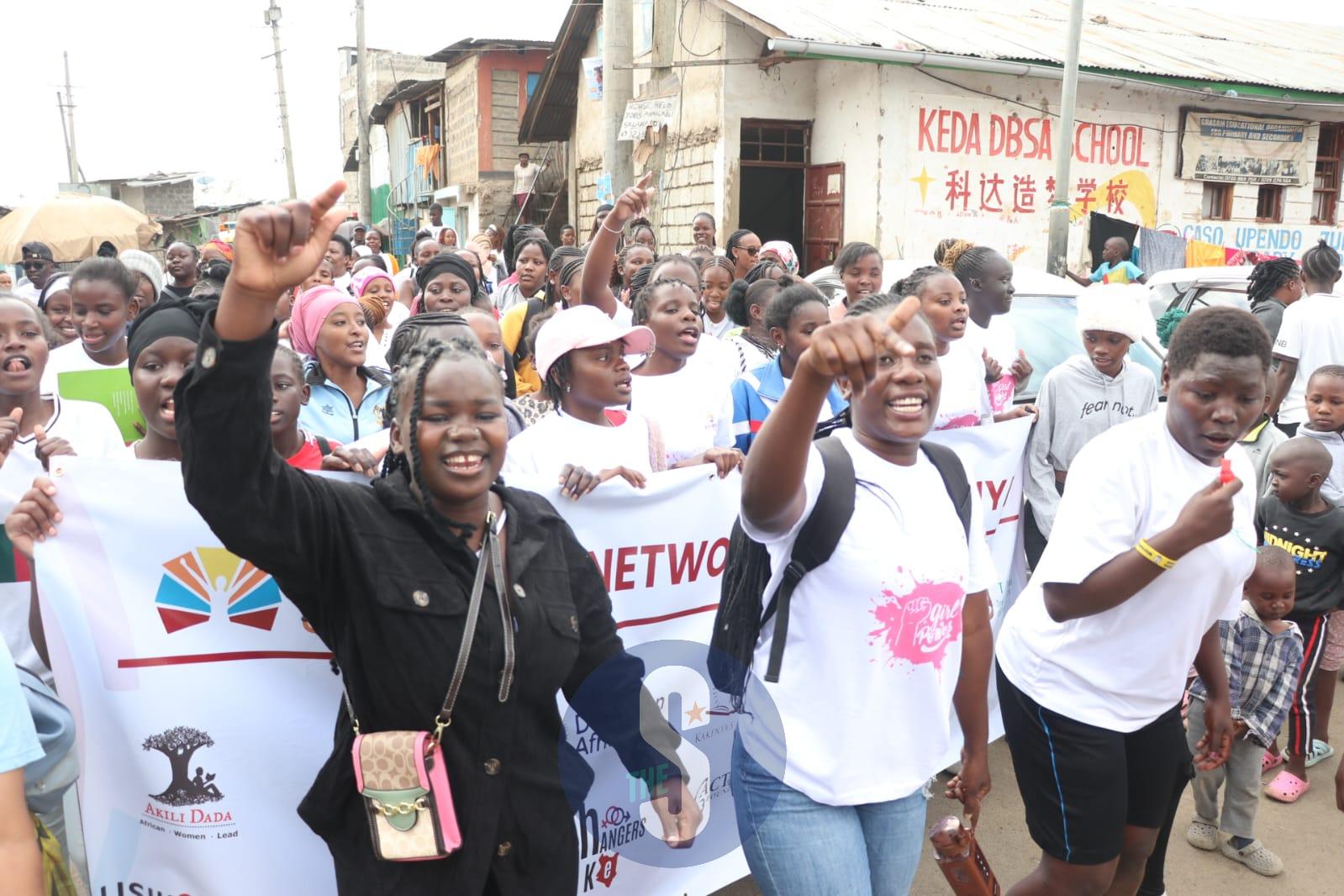 Young mothers during a procession through the local community ahead of the commemoration of the International Day of the Girl Child at Mathare, Nairobi, on October 9, 2025/LEAH MUKANGAI
Young mothers during a procession through the local community ahead of the commemoration of the International Day of the Girl Child at Mathare, Nairobi, on October 9, 2025/LEAH MUKANGAIAs I make my way into Mathare, the narrow streets are alive with colour and sound. A group of girls, some holding babies, others raising handwritten placards, march through the road chanting, “Girl power! Girl power!” Their laughter and songs echo off the corrugated rooftops.
It is the eve of the International Day of the Girl Child, and this year’s theme, "The Girl I Am, The Change I Lead," feels alive in the energy of the young mothers leading the march.
Among them is Batuli Amani, whose story mirrors the struggles faced by many girls in informal settlements.
“I was only eighteen when I became a mother,” she says.
“I had to leave school and start working because my child needed to eat. My mother sent me away, and I went to stay with a neighbour, but even there I was not accepted. Eventually, I went back to my child’s father, but he abandoned us.”
Now 25, Batuli says her child has been her greatest source of motivation.
“When I look at my child, I feel like moving on. My child gives me strength and has taught me how to live my life,” she says.
Batuli is part of a small support group in Majengo that brings together young mothers to share experiences and lift each other up.
“We talk about our problems. If someone has a problem, we help each other,” she says.
“In our group, I also share my story to encourage them.”
For her, the International Day of the Girl Child is a reminder that her journey, though difficult, has made her stronger.
“It means that everything I’ve been through has been okay and I can continue with my life,” she says.
“I want young girls, especially those between 15 and 18 years, to look after themselves.”
She also hopes for more safe spaces for girls.
“In Majengo, we do not have a place where girls can go to solve their problems. I encourage the government to put up more safe spaces where girls can find help,” she says.
Batuli’s message to parents is direct. “Parents should listen to their children. If a child has a problem, they should be able to talk to their parents. Even when a child needs something as simple as a sanitary pad, parents should listen and support them. They should be the first option,” she says.
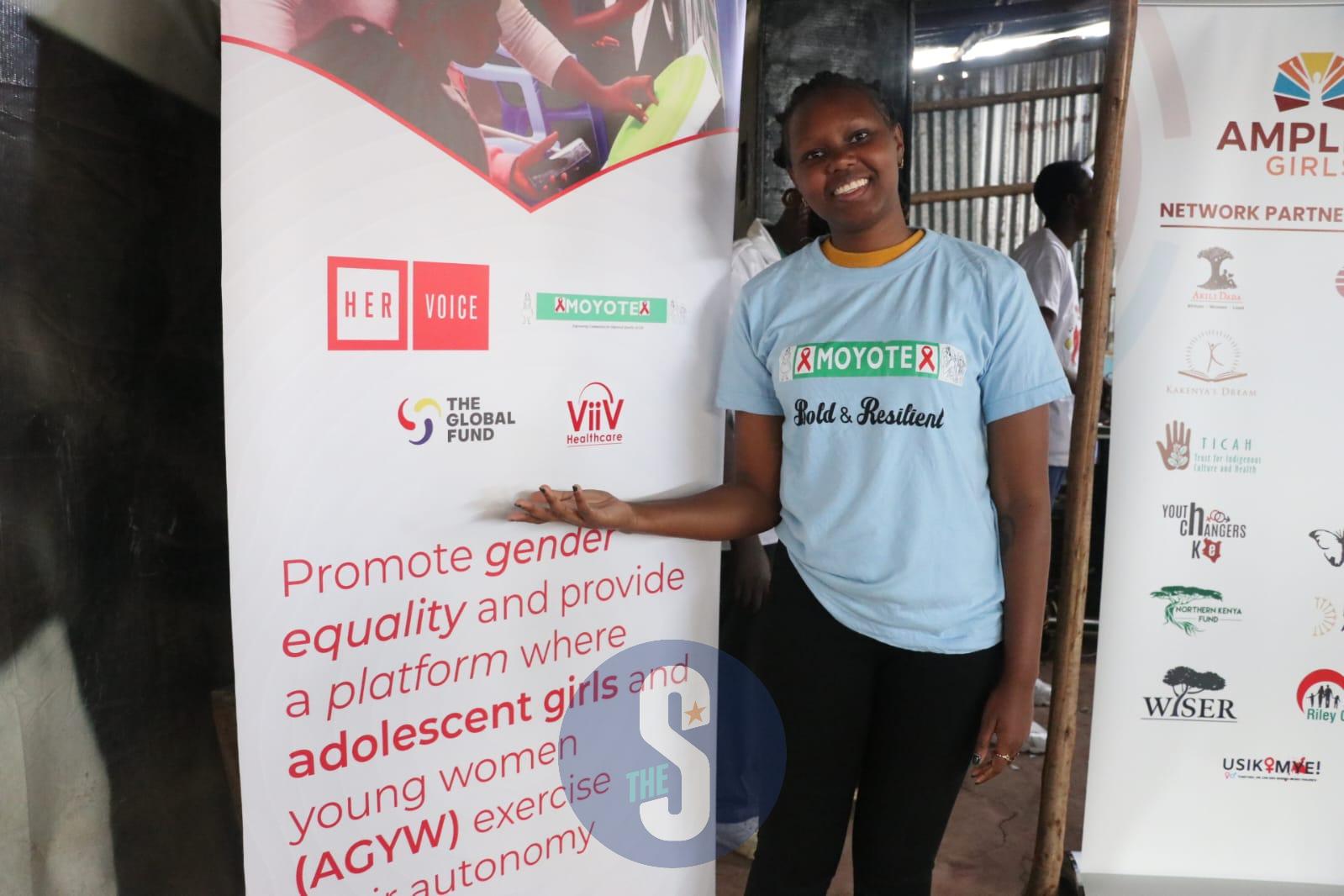 Pauline Wanja, Monitoring and Evaluation Officer at the Most At Risk Young Mothers and Teenage Girls Living with HIV Initiative (MOYOTE) during the commemoration of the International Day of the Girl child at Mathare, Nairobi on October 9, 2025/LEAH MUKANGAI
Pauline Wanja, Monitoring and Evaluation Officer at the Most At Risk Young Mothers and Teenage Girls Living with HIV Initiative (MOYOTE) during the commemoration of the International Day of the Girl child at Mathare, Nairobi on October 9, 2025/LEAH MUKANGAICynthia’s story of
resilience
A few meters away, I meet Cynthia, who recently turned 18. A mother of one, she reveals how stigma and shame continue to hold back many young mothers.
She became pregnant while in Form Four.
“My mum encouraged me to register because, according to her, the Form Four certificate was very important,” she says.
After giving birth, she left her child under her mother’s care and went back to school to sit for her exams.
But returning to class was not easy. “People talked about me, friends abandoned me, and my mother was angry and disappointed,” Cynthia says.
“Teachers used me as an example while teaching, making me feel ashamed, guilty,
and embarrassed. I eventually dropped out of school.”
She later joined a teaching college but could not complete her studies due to lack of fees.
“There was a time I taught at a small school, but when I travelled for a burial, the school found my replacement. My child’s father supports where he can, though the burden of raising the child is mostly mine,” Cynthia says.
Despite the challenges she faces, Cynthia advises young mothers not to give up.
“It’s not the end of life. Children are a blessing, and things will always work
out.”
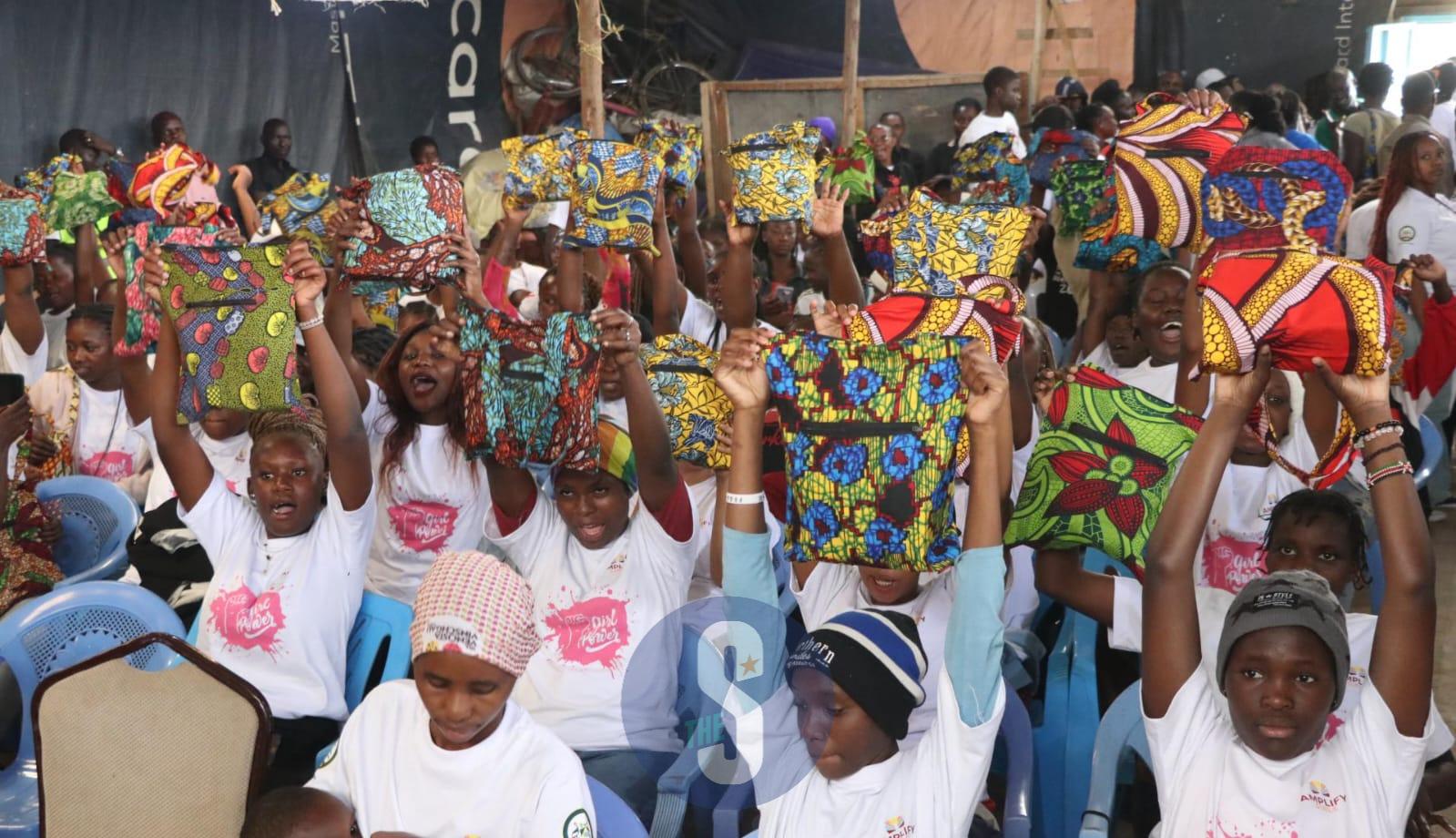 Young mothers hold gift bags during the commemoration of the International Day of the Girl Child at Mathare, Nairobi, on October 9, 2025/LEAH MUKANGAI
Young mothers hold gift bags during the commemoration of the International Day of the Girl Child at Mathare, Nairobi, on October 9, 2025/LEAH MUKANGAIOn her part, Trust for Indigenous Culture and Health [TICAH’s] Program Coordinator, Mickreen Adhiambo, says supporting young mothers requires more than policies; it needs practical inclusion.
“When you think about a young adolescent who’s already gotten pregnant and is at the verge of dropping out of school, or has already dropped out, that alone can be overwhelming,” she says.
“Many are also survivors of gender-based violence and face an increased risk of
sexually transmitted infections. These realities create a compounding effect on
their mental health.”
She says Kenya has made progress on paper, but the gap remains wide.
“We have many policies and hotlines meant to support mental health, but
accessibility remains a major issue. We need to go beyond policies on paper and
ensure real access to holistic care, counselling, support, and handholding,”
Adhiambo says.
Through TICAH’s adolescent sexuality program, young mothers are connected to reproductive health information and economic empowerment.
“We link adolescent mothers to scholarship programs and technical training in areas such as mechanics, hair and beauty, and hospitality through TVET institutions. We’re also working with other partners to provide vocational training that enables these young mothers to become economically independent,” she says.
“We always say, ‘Nothing for us without us.’ When it comes to working with the youth, it’s not just a slogan. We must co-design projects with them, not for them. Let us trust girls with the process and allow them to lead their own empowerment.”
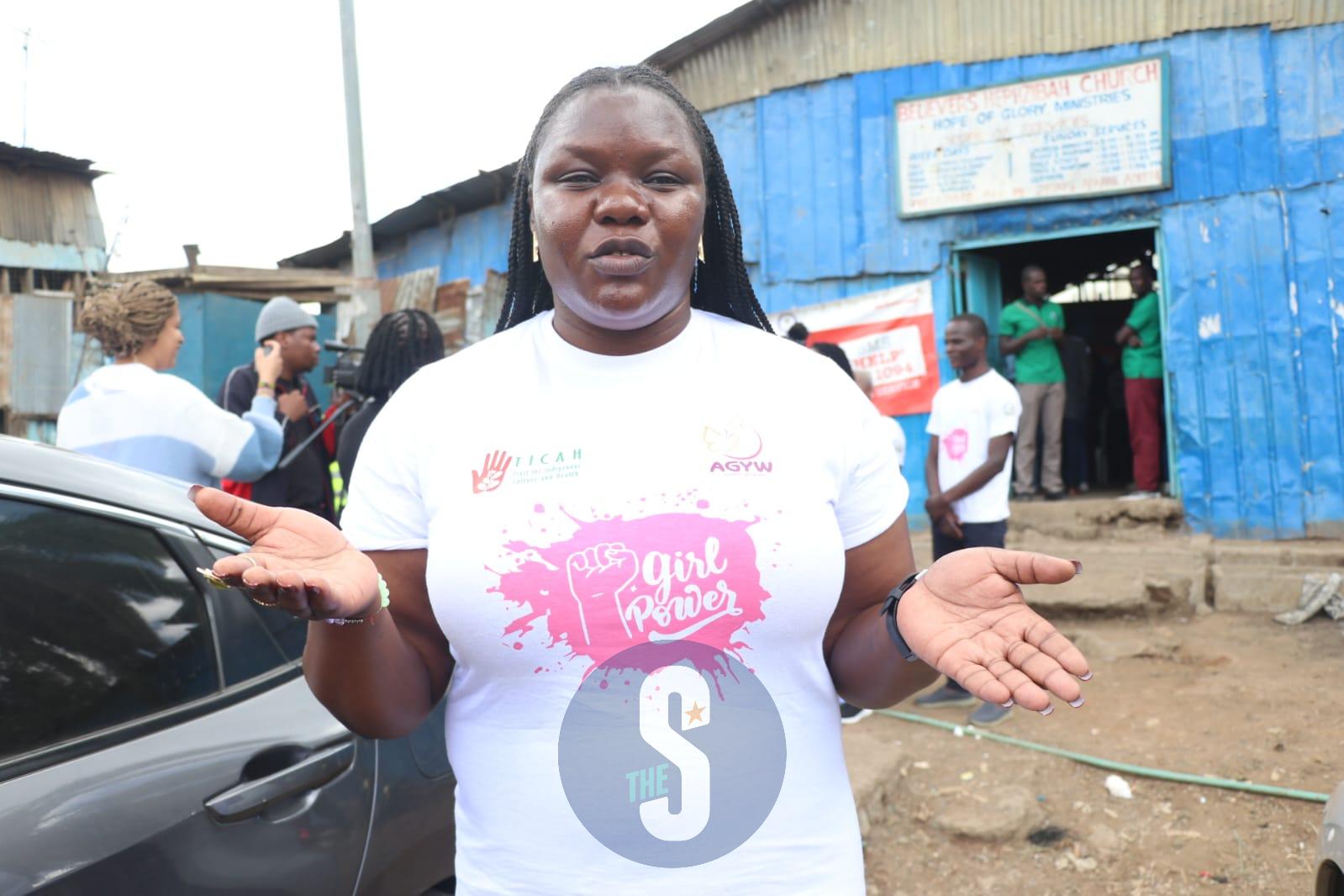 Trust for Indigenous Culture and Health Program Coordinator, Mickreen Adhiambo, during the commemoration of the International Day of the Girl Child at Mathare, Nairobi, on October 9, 2025/LEAH MUKANGAI
Trust for Indigenous Culture and Health Program Coordinator, Mickreen Adhiambo, during the commemoration of the International Day of the Girl Child at Mathare, Nairobi, on October 9, 2025/LEAH MUKANGAIMental health and stigma
Pauline Wanja, Monitoring and Evaluation Officer at the Most At Risk Young Mothers and Teenage Girls Living with HIV Initiative (MOYOTE), says teenage and young mothers face many challenges beyond the physical and financial, including mental health struggles that are rarely spoken about.
“They face challenges linked to gender-based violence, early pregnancies, and new HIV infections,” she says.
“Once you become a teen mom, society often assumes your life is over. The trauma that comes with this, combined with the struggle to go back to school or become economically empowered, leads to deep emotional distress.”
According to Wanja, stigma remains one of the biggest obstacles.
“When girls drop out of school, they face stigma from peers and teachers. Even those who continue with life feel the stress of comparison. Social media also adds a new layer of tech-based stigma,” she says.
She adds that healing must begin early.
“Integration should be the main thing. Every girl, from childhood through adolescence, should have access to mental wellness support,” she says.
She also emphasises the importance of letting girls lead their own empowerment.
“The most effective approach is allowing girls to design their own programs. When they identify what helps them feel better and what challenges them, the impact is greater,” Wanja says.
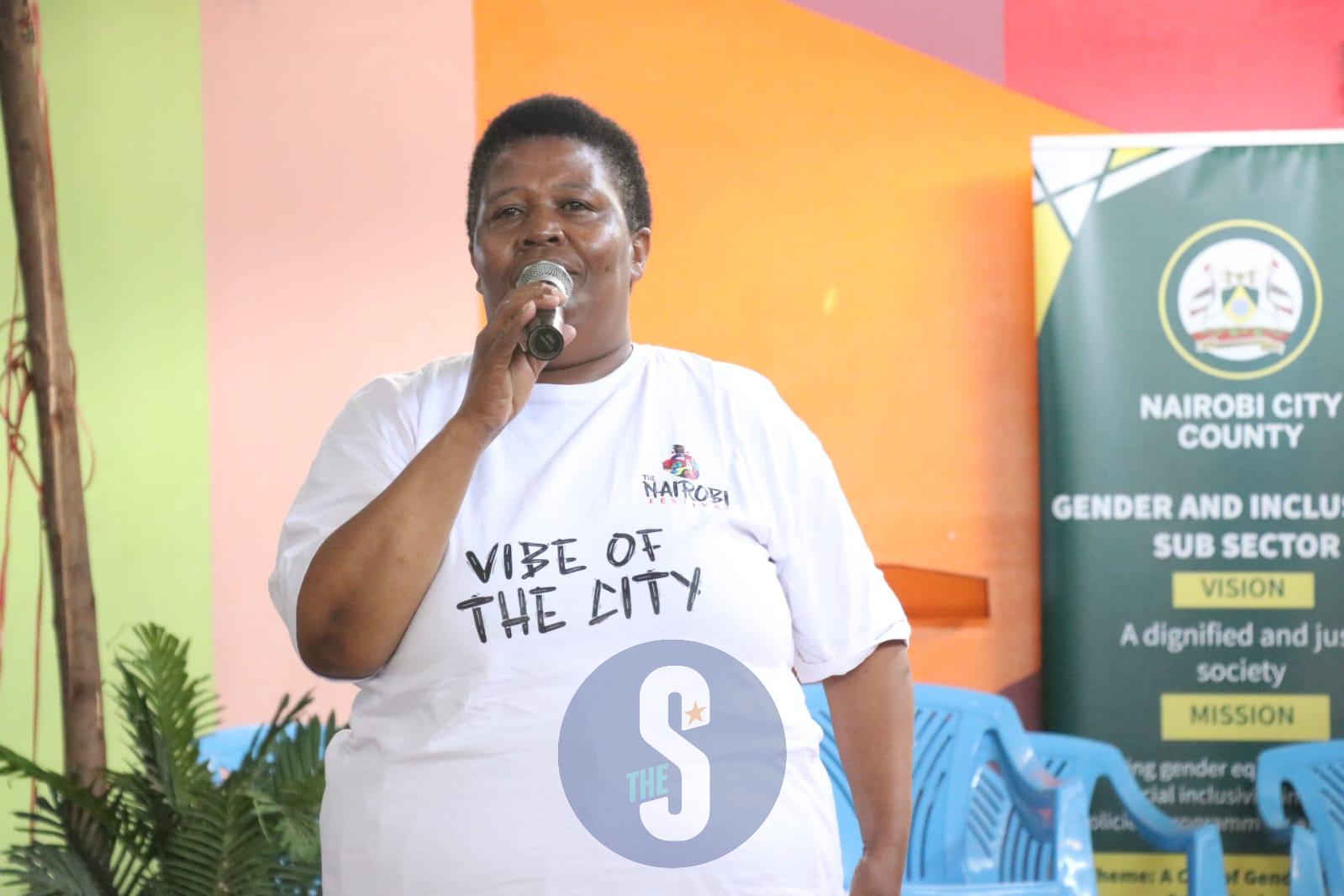 Nairobi county gender and Inclusivity Director Jane Gichure speaking during the commemoration of the International Day of the Girl Child at Mathare, Nairobi, on October 9, 2025/LEAH MUKANGAI
Nairobi county gender and Inclusivity Director Jane Gichure speaking during the commemoration of the International Day of the Girl Child at Mathare, Nairobi, on October 9, 2025/LEAH MUKANGAICounty and community support
During the march, Jane Gichure, Director of Gender and Inclusivity at the Nairobi City County Government, says the county remains committed to addressing the issues affecting girls and young mothers.
“We are focusing on the issues affecting the girl child because there have been reports showing an increase in teenage pregnancies,” she says.
“Apart from that, the girl child faces multiple problems, from poverty and
school dropouts to cases of FGM. That’s why we are here: to address those
issues, hear their stories, and learn how they have been able to overcome their
challenges.”
According to Gichure, the county is working to ensure that young mothers access counselling, reproductive health services, and vocational opportunities.
“We want them to regain their confidence and know there is hope beyond getting pregnant and having a child,” she says.
On education and empowerment, Gichure says the county supports girls who wish to return to school or pursue vocational skills.
“If a girl cannot continue with formal schooling, we want her to get employability skills so that she can assist herself, her child, and her family,” she notes.
She adds that the county is partnering with NGOs, community-based organisations, and health institutions to combat stigma and promote community responsibility.
“We want to create awareness in the community that supporting these girls is everyone’s responsibility,” she says.
“The failure to support them affects not just the girls but the entire community. We want parents, young men, and community members to come together and support girls instead of isolating or stigmatising them. They need to accept what has happened and believe that there is light at the end of the tunnel.”
According to Gichure, the goal is to have girls who are knowledgeable about their health, their rights, and what to do in case of danger or abuse.
“When girls are informed, that’s the first step to overcoming the challenges they face every day,” she says.
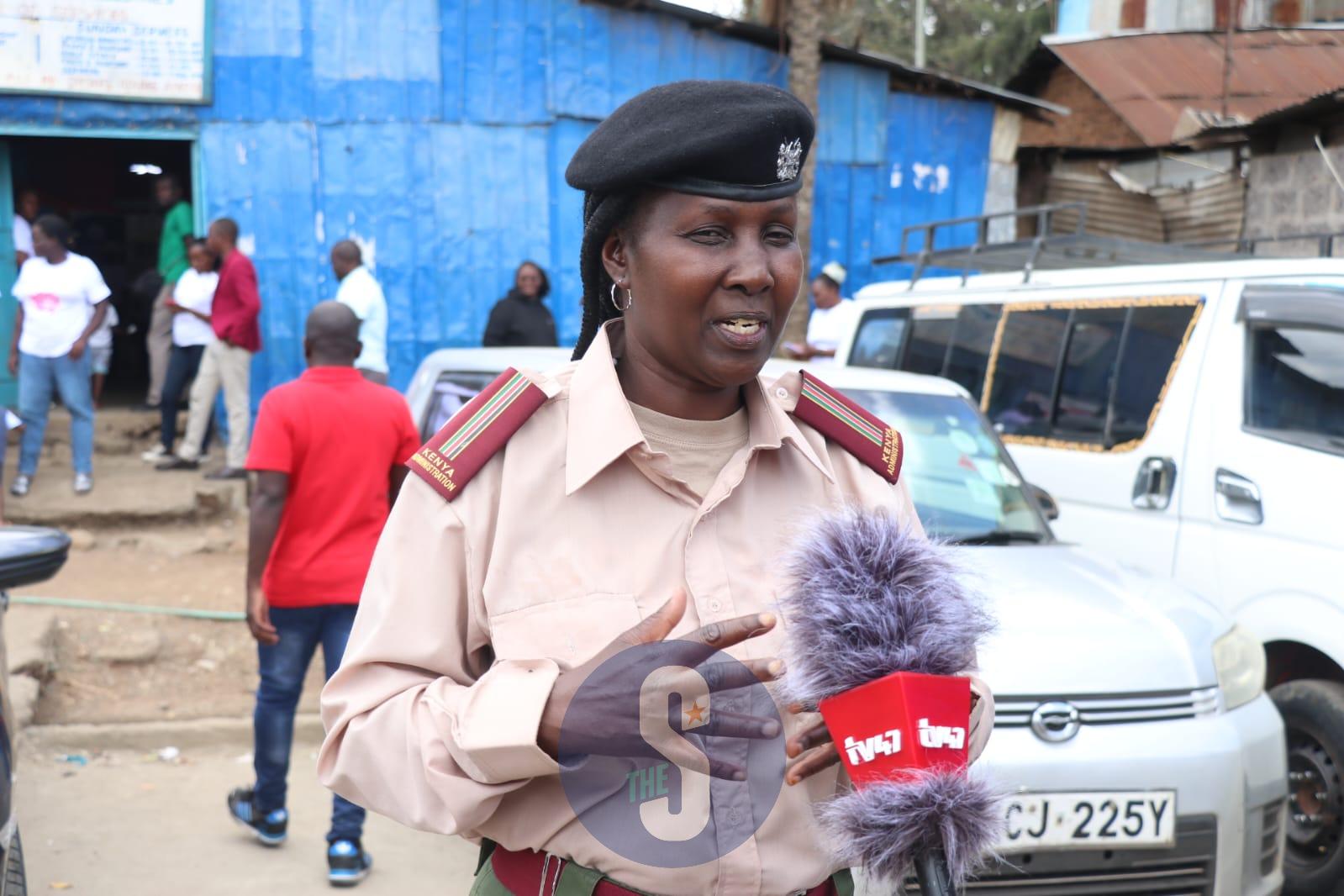 Chief Rose Ayere of Utalii Location speaking during the commemoration of the International Day of the Girl Child at Mathare, Nairobi, on October 9, 2025/LEAH MUKANGAI
Chief Rose Ayere of Utalii Location speaking during the commemoration of the International Day of the Girl Child at Mathare, Nairobi, on October 9, 2025/LEAH MUKANGAIIn the same community, Chief Rose Ayere of Utalii Location says her office continues to champion education and empowerment for young mothers.
“To measure the success of these programs, we monitor those who have benefited from education and economic support, depending on the number of girls enrolled in the various programs offered by these organisations,” Chief Ayere explains.
She notes that community involvement has played a key role in reducing stigma against young mothers.
“Due to the many organisations in the community, we can have members of the community speak to the young mothers and support them. Most people working in these organisations are from the community, so they easily embrace and support the teen moms,” she says.
As the world marks the International Day of the Girl Child, Chief Ayere underscores the importance of sexual and reproductive health education, not only for girls but also for boys.
“I conduct meetings with boys twice every week to educate them on the consequences of engaging sexually with minors,” she notes.
“We also educate parents to talk to their children and encourage them to take them back to school after giving birth. The government has ensured that girls who get pregnant remain in school and return after childbirth,” she says.
Through these coordinated efforts, Mathare continues to stand as an example of how community-led initiatives can help young mothers reclaim their lives and shape a better future.
As the world marks the International Day of the Girl Child, Chief Ayere’s message is one: “Girls should respect and take care of themselves.”





